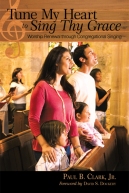 I have read and re-read posts and book excerpts and other material regarding multi-generational worship. I even meandered off the path a bit (though it is related) to an article attacking youth ministry as “a failed 50-year experiment.” Authors from diverse backgrounds and theological postures have addressed the issue of age-segregated worship, as well as age-division in other aspects of church life. While taking care not to impugn motives, strong responses still surface from some of these leaders. The use of descriptors like “total mess” and “chronological snobbery” makes clear their disposition toward the practice, and gives an indication of their sense of the extent to which that practice has damaged church unity, and contributed to the ongoing decline of young adults who regularly attend church worship. In spite of declining statistics, some leaders have, nevertheless, seemed to double down on efforts to segregate worshipers by age, or by stylistic preference.
I have read and re-read posts and book excerpts and other material regarding multi-generational worship. I even meandered off the path a bit (though it is related) to an article attacking youth ministry as “a failed 50-year experiment.” Authors from diverse backgrounds and theological postures have addressed the issue of age-segregated worship, as well as age-division in other aspects of church life. While taking care not to impugn motives, strong responses still surface from some of these leaders. The use of descriptors like “total mess” and “chronological snobbery” makes clear their disposition toward the practice, and gives an indication of their sense of the extent to which that practice has damaged church unity, and contributed to the ongoing decline of young adults who regularly attend church worship. In spite of declining statistics, some leaders have, nevertheless, seemed to double down on efforts to segregate worshipers by age, or by stylistic preference.
There are certainly plenty of challenges when seeking to bring age groups together in unified public worship, but I am convinced the long-term value is worth the effort, and the ultimate result needs to be Spirit-empowered, anyway, and not just human engineered. Terry York says, “Cross-generational worship calls the generations to respect each other’s worship treasures as family heirlooms, contributions to the story of which they are a part.”[1] Likewise, intergenerational worship calls for worshipers of all ages to join in confronting realities that may give reason for lament as well as causes for celebration. Rather than propose the world is “happy, happy, happy” all the time, perhaps all generations need to celebrate when appropriate, and then also to respond in lament to honest confrontation of issues that face any of us in contemporary life that scripture says are contrary to God’s design. Worship speaks of right order, but also addresses fractured relationships, fear, loss, and heartache. All ages are effected by these. John Witvliet notes:
We are ministering in a broken world. Even in North America suburbia, all is not well. And regardless of your generation there is nothing as relevant as showing up at church on a Sunday morning and joining a congregation that is willing to name precisely and intercede passionately for the very problem that drove you there in the first place.[2]
Proposals for multi-generational worship are often opposed on grounds that stylistic choices in music will keep some group upset at all times. The thought is that if old hymns are used, then young worshipers will be disinterested, and if newer songs are used older worshipers will be left out. Marginalizing of worshipers’ ability to respond to musical breadth and/or to grow through worship education would seem to be indicative of deeper problems. Considerations for multi-generational corporate worship must take into account process as well as expectation. Forming biblical character in churches as well as individual persons does not occur unilaterally; rather it is a community event. In fact, it is precisely this aspect of ecclesiology (who is the church) that is at issue here. When we can only worship with others of our same age group, or musical dialect, we are likely forming an unhealthy community. As Bill Davis says in his doctoral dissertation on this subject, “The cost of satisfaction gained from generation-focused worship is the forfeiture of the richness of intergenerational connections.”[3]
Some considerations regarding intergenerational worship participation:
- Seniors face physical issues different from what youthful worship participation might require (unable to do as much standing, getting up and down, difficulty kneeling)
- Vocal ranges for seniors are more limited, especially at the high end
- Children face challenges of comprehension and attention span
- Teens face challenges of self-conscious peer relationships
- Adults face challenge of self-actualization impatience
- Differences in kinds of thinking, linear for middle to older adults, and mosaic for younger adults and students
- Music volume is often more at issue than style or selection, older adults and children may be sensitive to loudness
In a subsequent article we will offer suggestions for intergenerational worship components and resources, but the late Robert Webber offered this general thought toward healthy worship including intergenerational worship settings. He said, “In contemporary society the heart is reached through participation, and all approaches to worship need to relearn how to achieve services characterized by immersed participation.[4]
Great is the Lord and most worthy of praise;
his greatness no one can fathom.
One generation commends your works to another;
they tell of your mighty acts.
They speak of the glorious splendor of your majesty—
and I will meditate on your wonderful works.
-Psalm 145:3-5
[1] Terry York, “Cross-Generational Worship”
[2] John Witvliet, Worship Seeking Understanding (Baker Academic 2003), 62.
[3] Bill Davis, “Creating a Climate for Intergenerational Worship at Thomasville Road Baptist Church,” (Robert Webber Institute for Worship Studies, 2007)
[4] Robert Webber, Planning Blended Worship (Abingdon Press), 29.




